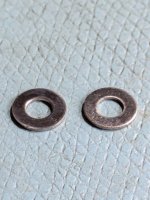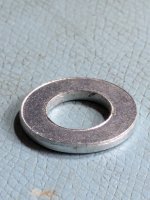It appears I have been corrected….again.
Admittedly, I don’t notice the indentation in hand. One must admit however, it is nominal and is concentrated in the center of the star washer where the pressure is amplified by the design of the washer. There is no indication that the major od of the star washer is making contact. It obviously has not created a groove anywhere near the magnitude of the groove cut in the failed valve. Take from that what you will.
I have the materials and capability to produce a different designed closing valve….at this point I’m not convinced there is a need.
Dave
Admittedly, I don’t notice the indentation in hand. One must admit however, it is nominal and is concentrated in the center of the star washer where the pressure is amplified by the design of the washer. There is no indication that the major od of the star washer is making contact. It obviously has not created a groove anywhere near the magnitude of the groove cut in the failed valve. Take from that what you will.
I have the materials and capability to produce a different designed closing valve….at this point I’m not convinced there is a need.
Dave
Upvote 0

